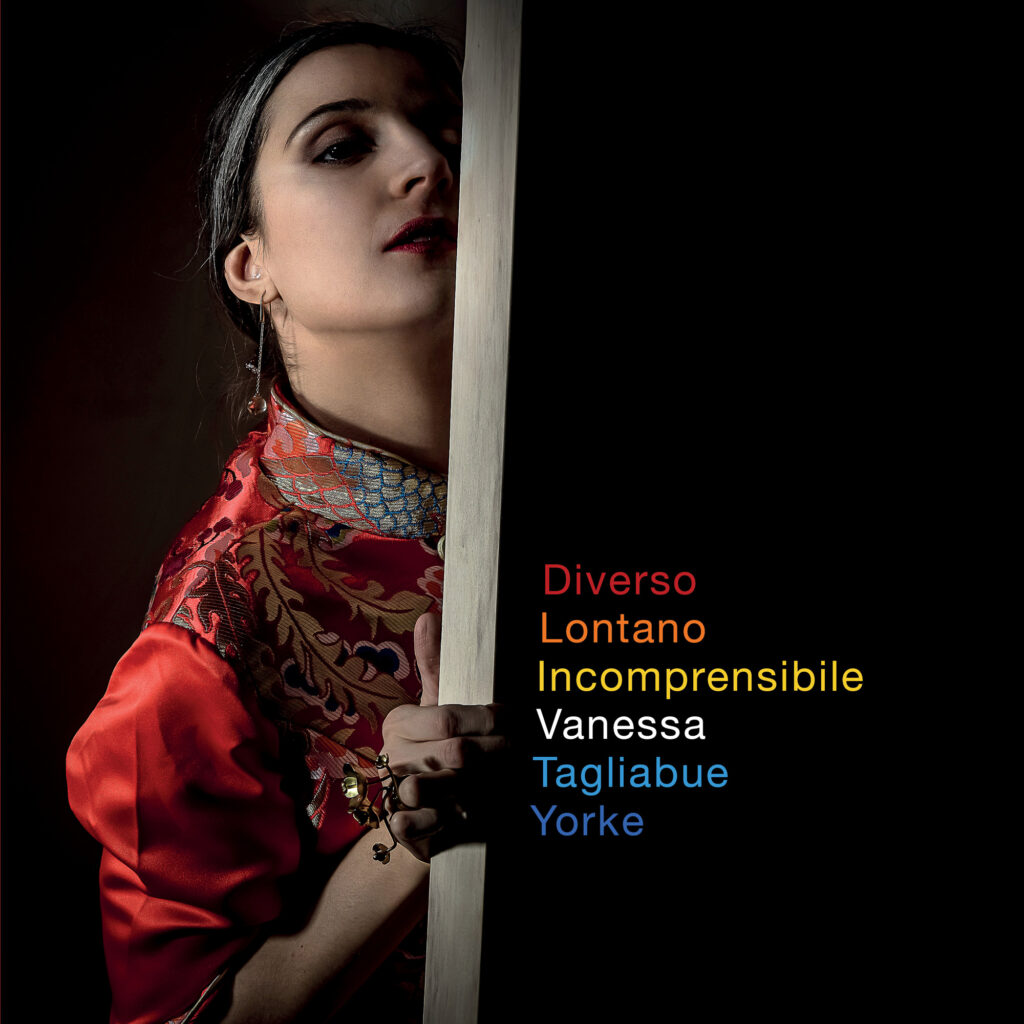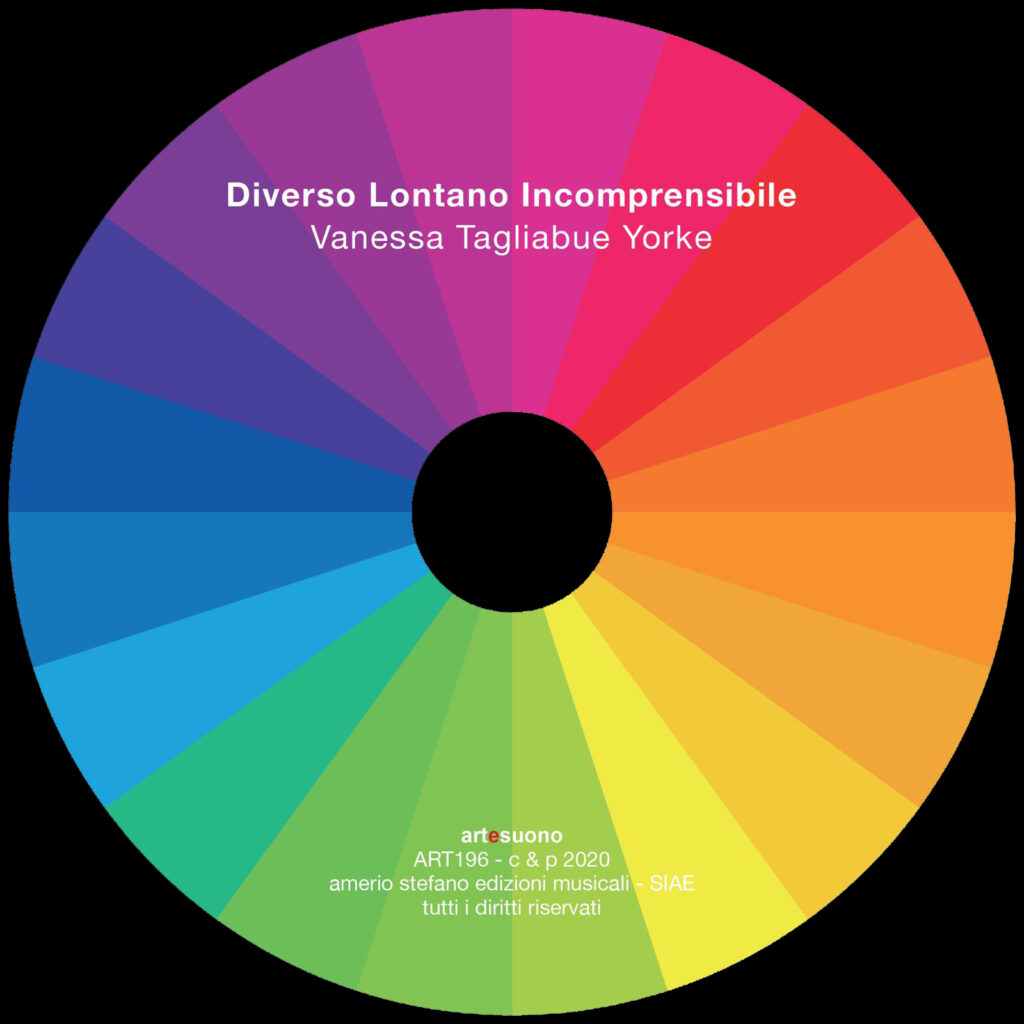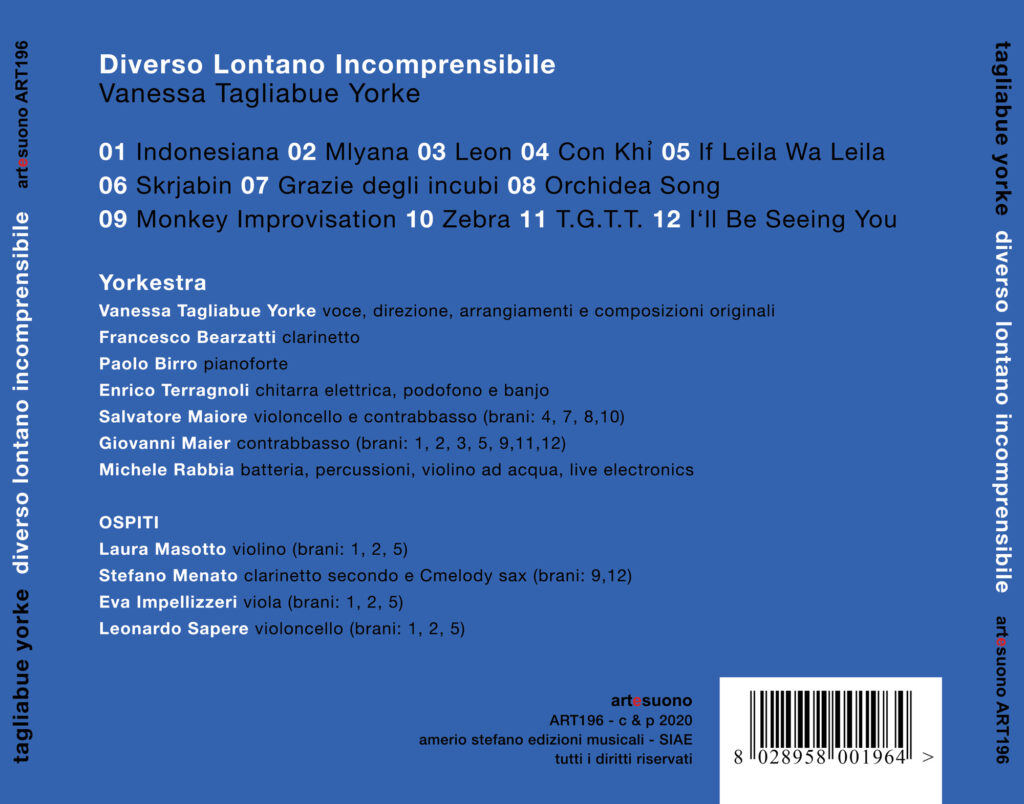
Read the Review by Chris May on All About Jazz HERE
Diverso Lontano Incomprensibile which can be translated as “Different, distant and incomprehensible” is the latest album by Vanessa Tagliabue Yorke, which was released on September 4th 2020 by Artesuono . This is a recording that follows many years of study , with an entirely unique approach by the singer, who is also the author of most of the music, lyrics and arrangements. In this album Vanessa has tried in every way to evade traditional ideas of harmony, drawing inspiration from Eastern and Middle Eastern music, from French music of the twentieth century and free jazz. The different languages in which she sings across the album, with their own diversified idioms, allow for an atypical rhythmic and melodic approach, with accents and intentions different from the traditional approach to jazz vocals . A more strictly jazz ensemble composed of Francesco Bearzatti on clarinet, Paolo Birro on piano, Enrico Terragnoli on electric guitar, banjo and podophone, Salvatore Maiore on cello and double bass, Giovanni Maier on double bass and Michele Rabbia on drums is complimented by musicians with a classical background including Laura Masotto on violin, Stefano Menato on second clarinet and Cmelody sax, Eva Impellizzeri on viola and Leonardo Sapere on cello.

Vanessa explains how Diverso Lontano Incomprensibile was created:
“Those who are Different do not iterate styles and habits of the society they live in, those who are Distant feel the disproportion between where they are and the Beyond, everything we haven’t dreamt of yet is Incomprehensible. This work brings together all the marvels that I have gradually discovered in my quest between cultures and dimensions that fascinated me, and that seemed to be distant from what I was seeing and hearing around me. The timbric and phonetic, rhythmic and syntactic richness of my musical language has been enhanced and renovated by the sounds of the various languages I am singing in. The word of the poet, set to music by the composer and interpreted by the singer, projects traditional Arabic music in a horizon that is completely at the service of meaning, allowing the listener to reach the Tarab, a place of bliss and somehow of dreams too, therefore indeed a mutual understanding between singer and listener, in a profound emotional permeation. These are some of the aesthetic ideals that guided me. My musical imagination, exposed to a landscape of sounds and immersed in the song of birds, as an otherworldly guide that already contains and reveals the world, sometimes slides into lyric-less melodic lines. Starting with the exceptional teaching of Olivier Messiaen I was influenced by, and the experience of great 19th-century composers which inspired me, such as Claude Debussy, Alexander Scriabin, Bix Beiderbecke and Gerard Grisey above all, sinuous and dissonant pieces emerged, as well as orchestral arrangements that support all my Javanese, Thai and Vietnamese influences. Studying the orchestral scores by Gerard Grisey and singing inside a spectrosonogram, I embraced a spectralist approach and I tried to instill this idea into my writing for stringed instruments. I considered every single sound as a chord in itself. I searched for something beyond what I know and what surrounds me today. It’s not just an alternative to the genre I usually sing: I like early jazz as it was able to draw from African as well as from Far Eastern musicalities, from European composers as well as from traditional cultures. I like early jazz because it is polythematic, because the singer thinks about what they are saying and words are not an obstacle to music, rather a stepping stone to innovate the phrasing. In this sense I made a traditional record, but a Different, Distant and Incomprehensible one.”
